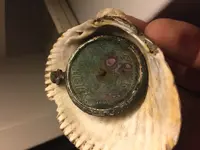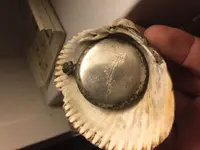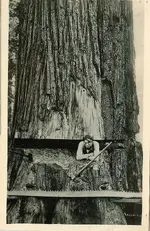EARLY AMERICAN COIN SILVER, A BRIEF HISTORY | eBay
Coin Silver may be one of the least understood and most misused terms in the world of antiques. On eBay it is often used to describe European silver or antique coins. In the antique world the term is used to describe American silver flatware and hollowware made before 1870 that is NOT Sterling.
Put simply, Coin Silver is 90% silver. The silver content is 2.5% less than Sterling and is the same composition as American coins made prior to 1964. Silver is most often alloyed with copper for strength. Coin silver, then, also includes 10% copper.
Silver then, as now, was a symbol of affluence. It was the product of skilled craftsmen who worked with precious metals. Precious and rare metals. For the early American Goldsmith or Silversmith, the titles were interchangeable until the mid 1800's, access to raw materials was a problem.
Until the opening of the Comstock Lode in 1859 there were no silver mines in the United States of any significance. Before that nearly all silver in the US first came as either a finished product -- bowl, candlestick, spoon, or whatever -- or as a silver coin or bar. Most all silver imports were of European manufacture.
Colonial currency was a hodgepodge of Pounds, Francs, and Pieces of Eight. The value of any given coin was determine by it's weight and silver or gold content.
For the American silversmith to obtain raw materials he either had to purchase silver bars or melt silver coins. A silversmith with a rush order could, literally, reach into his pocket. And from that comes the generic term -- Coin Silver.
Silversmiths would also buy silver items from the public. Most every silversmith's newspaper advertisement would also include an offer to buy.
This partially explains the rarity of very early American silver. Many a spoon from the 1720's was melted down to become an 1820's spoon. Another reason that pre-1800 silver is rare is the fact that there were far fewer people and, of those, fewer still who could afford silver. As both population and wealth grew so did the demand for silver.
Concurrent with US population growth came advances in technology. The 1780's brought a rolling machine for processing melt into sheets of silver. In 1801, Thomas Bruff of Chestertown, MD invented a spoon press. Hours previously spent on repetitious preparatory tasks could now be spent on ornamentation. Repoussed and Chased hollowware and patterned flatware began to replace the plain Federal styles.
By 1855 Tiffany and Gorham were making exquisite silver and having difficultly selling it because: "It's not as good as English Silver"... and it wasn't. It was 90% silver. The English had been on the Sterling standard since the early 1300's. Their silver was 92.5%. It wasn't long before both Tiffany and Gorham were making Sterling silver.
This, in turn, left Kirk, Wood & Hughes, William Gale & Son, and every other silversmith in America listening to: "Well, it's nice, but it's not as good as Tiffany or Gorham".
By 1870 Sterling had all but replaced Coin Silver. The small, local silversmiths were replaced by jewelry shops and 'fancy goods' merchants. These shops retailed Sterling silver made in large, mostly Northern, factories.
Perhaps because it is misunderstood, when compared to any other early Americana, Coin Silver remains a bargain. Certainly, important pieces by important silversmiths, such as Paul Revere, are bringing premium prices. But many beautiful pieces by lesser known, but equally skilled, smiths remain reasonably priced and available.








